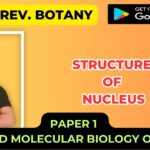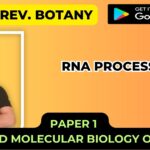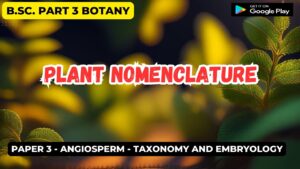![]()
ISOLATION OF CHLOROPLAST COMPONENTS
- The development of techniques for isolating chloroplasts and their various components has played an important role in advancing our understanding of the functional organization of this organelle.
- Chloroplasts can be isolated from plant cells in one of several different ways.
- Some procedures utilize harsh homogenization techniques, such as grinding cells with sand using a mortar and pestle, to break the cell wall and release the chloroplasts into’ solution.
- Following removal of nuclei by centrifugation at low speed, chloroplasts are collected by centrifuging at low speed, chloroplasts are collected by centrifuging at higher speeds.
- A more recent approach to chloroplast isolation employs the enzymes cellulase and pectinase to break down the cell wall.
- The advantage of this approach is that the resulting wall-less cells, or protoplasts, can be disrupted by gentler techniques prior to isolating chloroplasts by centrifugation.
- Chloroplasts isolated under harsh conditions are usually capable of carrying out the light-induced production of oxygen, ATP, and NADPH, but not C02 fixation.
- Electron micrographs of such defective class II chloroplasts reveal the presence of little or no stroma, and broken or missing outer envelopes.
- In contrast gentle disruption techniques yield completely intact class I chloroplasts that are capable of carrying out the complete pathway of photosynthesis, including C02 fixation.
- Class I and II chloroplast preparations have both been useful as starting material for isolating the various membranes and compartments that make up the chloroplast.
- In one commonly used procedure, class I chloroplasts are suspended in a hypotonic solution to rupture the chloroplast envelope, followed by isodensity centrifugation to separate the stroma, outer envelope, and. thylakoids from one another.
- Alternatively, class II chloroplasts lacking the outer envelope and stroma can be used as starting material for separating the thylakoid membranes into stacked and unstacked thylakoids.
- In this approach chloroplasts are disrupted in a special apparatus, called a French pressure cell,that shears the thylakoid membranes by forcing them through a small orifice following rapid decompression.
- This shearing process breaks the connections between the stacked and unstacked thylakoids, thereby allowing the two membrane fractions to be separated from one another by differential centrifugation.
- Biochemical studies involving components isolated in these ways have provided a great deal of information concerning the functional organization of the chloroplast

FUNCTIONS
- The most important function of chloroplasts is to carry out the process of photosynthesis.
- The process includes the light reaction and dark reactions.
- The light reaction takes place in the grana of the thylakoid membrane.
- In light reactions NADPH and ATP are produced.
- Dark reaction occurs in stroma of the chloroplast.
- In this reaction reducing the power of NADPH is used to fix co2 into carbohydrates.













